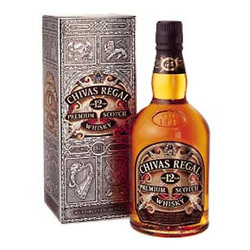
Scotch whisky demands a boat load of time to produce. This can be a tedious process that can last for several years. Having said that, if it's crafted in the correct way, the end product is one that is certainly worth the wait.
1st, the barley is submerged in tanks of water for roughly three days. The dampness causes the barley to get started with the germination process. When germinated, the barley will be transferred to the malting area of the distillery where it will be placed into drums often known as the malting floor.
The aim of the germination process is to transform the starch in the grains into fermentable sugar. The yeast will metabolize the sugars creating alcohol in the fermentation phase. Turning the barley regularly makes sure the temperature will stay consistent. Wooden shovels referred to as sheils are used to turn the grains on a traditional malting floor. The grains will die if the temp gets above 71 degrees F. This would in turn stop the whole process as the starch won't be converted to fermentable sugars.
The grain is then kiln dried to stop the germination process and the continuation of sugar consumption. Typically, a traditional kiln is a building standing 2 stories tall with the top perforated allowing all heat to escape. The ground floor contains peat bricks that are burned. During this process the grain is dried and soaks up the peat smell and flavour. The pagoda roof design on a distillery is among the most distinct element. Today, a good many distilleries purchase all their malt from a malting company. On the other hand, there remain a small selection that remain traditional and do it all themselves.
The grain is milled into grist and blended with water in mash tubs. The combination is heated to 60 degrees. Throughout the mashing period the water is changed at least 4 times to remove sediment. The byproduct of the mashing is named wort. The wort has to be cooled down prior to mixing with yeast. This huge container is never filled entirely as the wort froths a good deal because of co2. By the time two to three days have passed, the yeast is wiped out by the alcohol it produced. The final product of this cycle is referred to as wash. It has 5 to 8 percent alcohol.
The stills where the wash is put are created from copper and are regulated to a special shape which allows for proper distillation to take place. Distillation is usually completed 2 times, however, many companies do it three times or more. Just after the whole process is complete the distillate is put into barrels made normally of oak, for a no less than 36 months. Then again, many Scotch whiskies are aged for considerably longer.
To learn more about how to make whiskey and the practice of distillation look into How To Make Whiskey HQ. There you will discover mash recipies and detailed instructions for making whiskey at home.
1st, the barley is submerged in tanks of water for roughly three days. The dampness causes the barley to get started with the germination process. When germinated, the barley will be transferred to the malting area of the distillery where it will be placed into drums often known as the malting floor.
The aim of the germination process is to transform the starch in the grains into fermentable sugar. The yeast will metabolize the sugars creating alcohol in the fermentation phase. Turning the barley regularly makes sure the temperature will stay consistent. Wooden shovels referred to as sheils are used to turn the grains on a traditional malting floor. The grains will die if the temp gets above 71 degrees F. This would in turn stop the whole process as the starch won't be converted to fermentable sugars.
The grain is then kiln dried to stop the germination process and the continuation of sugar consumption. Typically, a traditional kiln is a building standing 2 stories tall with the top perforated allowing all heat to escape. The ground floor contains peat bricks that are burned. During this process the grain is dried and soaks up the peat smell and flavour. The pagoda roof design on a distillery is among the most distinct element. Today, a good many distilleries purchase all their malt from a malting company. On the other hand, there remain a small selection that remain traditional and do it all themselves.
The grain is milled into grist and blended with water in mash tubs. The combination is heated to 60 degrees. Throughout the mashing period the water is changed at least 4 times to remove sediment. The byproduct of the mashing is named wort. The wort has to be cooled down prior to mixing with yeast. This huge container is never filled entirely as the wort froths a good deal because of co2. By the time two to three days have passed, the yeast is wiped out by the alcohol it produced. The final product of this cycle is referred to as wash. It has 5 to 8 percent alcohol.
The stills where the wash is put are created from copper and are regulated to a special shape which allows for proper distillation to take place. Distillation is usually completed 2 times, however, many companies do it three times or more. Just after the whole process is complete the distillate is put into barrels made normally of oak, for a no less than 36 months. Then again, many Scotch whiskies are aged for considerably longer.
To learn more about how to make whiskey and the practice of distillation look into How To Make Whiskey HQ. There you will discover mash recipies and detailed instructions for making whiskey at home.
 RSS Feed
RSS Feed